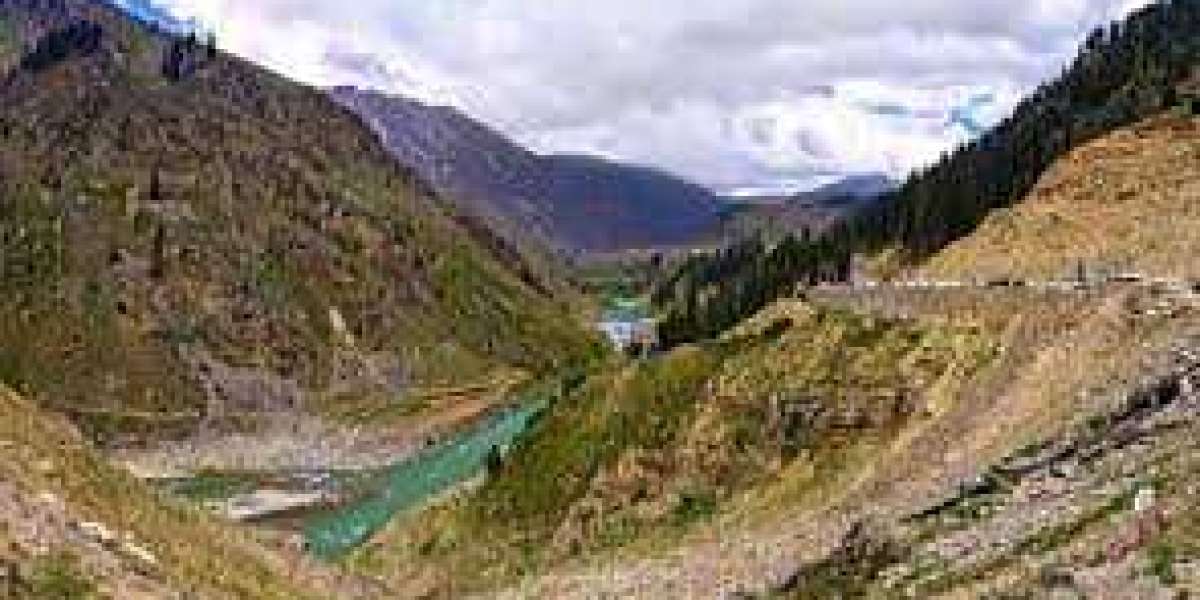Traveling through Pakistan’s northern regions is like stepping into another world, where every turn in the road reveals a new wonder of nature. Among the most iconic journeys is the road to Babusar Top, a mountain pass that crowns the Naran Kaghan Valley and connects it to Gilgit-Baltistan. This high-altitude gateway is more than just a route—it is an adventure through alpine lakes, lush meadows, gushing rivers, and snow-draped peaks that seem to touch the skies.
For many travelers, the road to Babusar defines the essence of Naran Kaghan: breathtaking, adventurous, and unforgettable. Let’s take a journey along this road and uncover the treasures that make it one of the most beautiful drives in Pakistan.
Starting Point: Balakot and the Kunhar River
The road to Babusar begins long before the mountains. From Balakot, the gateway to the Kaghan Valley, travelers follow the roaring Kunhar River as it carves its way through green hills and pine forests. Villages line the route, with traditional wooden houses and terraced fields adding charm to the valley floor.
The river is a constant companion on this journey, its icy-blue waters rushing beside the road, fed by glaciers from the surrounding peaks. Every stop here feels like a postcard moment, from small waterfalls cascading down cliffs to roadside tea stalls serving hot pakoras and chai.
Naran: The Heart of the Valley
The bustling town of Naran serves as the hub for travelers heading to Babusar. Situated at 8,200 feet above sea level, Naran is lively with hotels, shops, and cafes that cater to visitors from across the country. The cool climate, crisp air, and backdrop of snow-capped peaks make it a refreshing stopover.
Many choose to spend a night here before continuing the road trip, exploring nearby attractions such as Lake Saif-ul-Muluk or enjoying a riverside trout dinner. Naran is where the road transforms from a scenic valley route into a high-altitude adventure.
Lulusar Lake: A Mirror of the Sky
As the road ascends further, one of the first jewels to appear is Lulusar Lake, about 50 kilometers from Naran. This shimmering body of water lies at 11,200 feet, perfectly still and surrounded by snow-kissed hills. The lake is also the birthplace of the Kunhar River, which continues its journey through the valley below.
Lulusar is more than a scenic stop—it’s a place to pause, breathe, and admire nature’s artistry. On clear days, the lake mirrors the sky so vividly that it feels as if heaven itself has touched the earth.
Meadows and Villages Along the Way
The road to Babusar is not just about lakes and peaks. Along the way, travelers encounter small villages like Besal, a settlement with wooden huts and grazing pastures. It’s also a popular base camp for trekkers heading to Dudipatsar Lake, known as the “Queen of Lakes.”
The meadows near Besal burst into bloom during the summer months, with carpets of wildflowers painting the valley floor in vibrant colors. Shepherds guide their flocks across these pastures, adding a touch of pastoral beauty to the rugged landscape.
The Climb to Babusar Top
From Lulusar and Besal, the road begins its steep climb toward Babusar Top. At every turn, the scenery becomes more dramatic—sharp bends reveal towering peaks, while deep gorges remind travelers of nature’s grandeur. The air grows thinner, and the temperature drops as the altitude rises.
Finally, at 13,700 feet, the journey culminates at Babusar Top—a breathtaking mountain pass that opens up to sweeping panoramas of Pakistan’s northern ranges.
The View from the Gateway
Standing at Babusar Top feels like standing on the edge of the world. From this vantage point, travelers can see not only the lush Kaghan Valley behind them but also the rugged terrain of Gilgit-Baltistan ahead. On clear days, distant peaks of the Himalayas, Hindu Kush, and Karakoram ranges dominate the horizon.
The pass is often shrouded in clouds, with mist drifting across the road and creating a dreamlike atmosphere. At times, travelers can look down on floating clouds beneath them, making it truly feel like a gateway beyond the skies.
Adventure on the Road
The road to Babusar is as much about adventure as it is about beauty. The drive itself is thrilling, with winding turns, sharp inclines, and unpredictable weather. Summer brings green meadows and open skies, while early autumn paints the slopes in golden hues. Even in June, snow often lingers at the top, creating a surreal alpine landscape.
For adventurers, the road offers plenty of opportunities:
Photography: Every corner presents a frame-worthy shot, from waterfalls to wide-open valleys.
Camping: Many travelers camp near Lulusar or in the meadows of Besal, waking up to mountain sunrises.
Wildlife spotting: Lucky visitors may catch glimpses of marmots, ibex, or migratory birds that thrive in this high-altitude habitat.
Cultural Encounters
Beyond the natural wonders, the road to Babusar also provides a glimpse into local culture. The Gujjar and Kohistani people who inhabit the valley are known for their warm hospitality. Small roadside stalls offer snacks, tea, and sometimes freshly grilled trout fish.
Many locals share stories about the region—folk tales of Saif-ul-Muluk, myths about hidden fairies, and accounts of how the pass has historically connected traders and travelers between valleys. These encounters add richness to the journey, reminding visitors that the road is not just about landscapes but also about lives intertwined with them.
Best Time to Travel
The Babusar Pass remains open only from late May to early October, depending on snowfall. During the winter months, heavy snow makes the route impassable.
June–July: Lush greenery and flowing rivers.
August: Peak season, with lively tourist activity.
September–October: Cooler temperatures, autumn colors, and fewer crowds—perfect for peaceful exploration.
Travelers should always check weather conditions before setting out, as sudden rains or landslides can affect road accessibility.
Suggested Itinerary
For those planning to explore the road to Babusar, a 3–4 day itinerary works best:
Day 1: Depart Islamabad, stop at Balakot and Kaghan, stay overnight in Naran.
Day 2: Visit Saif-ul-Muluk in the morning, then continue toward Lulusar and Besal. Overnight camping or stay in Naran.
Day 3: Drive to Babusar Top, spend time exploring and photographing the breathtaking scenery. Return to Naran in the evening.
Day 4: Journey back toward Islamabad or continue onward into Gilgit-Baltistan.
This route allows time to savor the beauty without rushing through the valley.
Conclusion
The road to Babusar is not just a mountain highway—it is the soul of the Naran Kaghan Valley. With its shimmering lakes, flower-filled meadows, alpine villages, and breathtaking mountain views, the journey itself becomes the destination.



